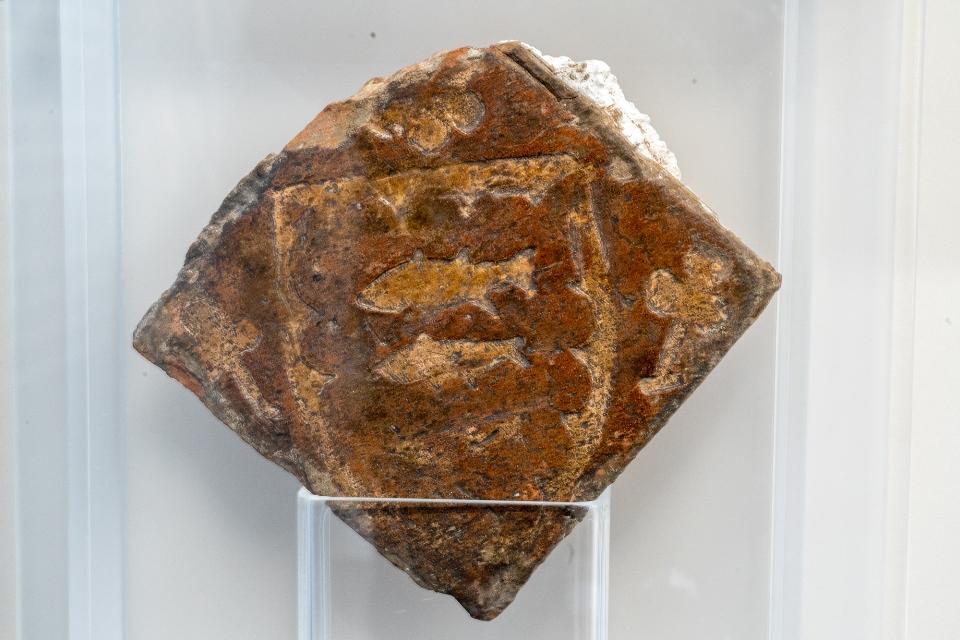Record details
| Floor tile | |

|
|
|
Decorated floor tile from St Andrew’s Priory. The three fish are the arms of Nicholas Lylling and represent a true and generous mind. |
|
| 1350-1400 | |
| Ceramic | |
|
In 1386 Abington was sold to Sir Nicholas Lylling who had been MP and High Sheriff for Northamptonshire. There is no evidence that he lived here. His only child Elizabeth married John Bernard. Decorated clay tiles featuring geometric designs, mosaics, and prestigious symbols such as family crests became popular in the Medieval period. Family crests could also be found in monasteries and churches where they showed the family’s patronage and piety. St Andrews Priory was a religious house in Northampton of the Cluniac order. It was located at the north west corner of the walled town. The priory was founded between 1093 and 1100 by Simon de Senlis, Earl of Northampton, and his wife Maud. By 1538 the priory was dissolved but was in debt and poor condition. The site of the priory was built over in the 19th century. The Roman Catholic Northampton Cathedral was erected on the land in 1823. The first Catholic chapel of St Andrew was built using stone found on the original site. A place to liveIn this section of the exhibition discover how the house changed over time and who lived there. Find out about the first concrete modernist house in England and what it’s like to live in Abington today. You can also find out which of Shakespeare’s descendants lived at Abington Manor. |
|
| On display in the live zone at Abington Gallery 1 |
